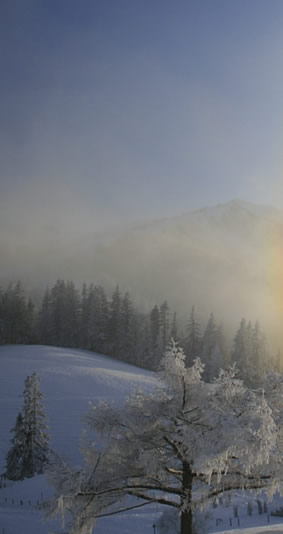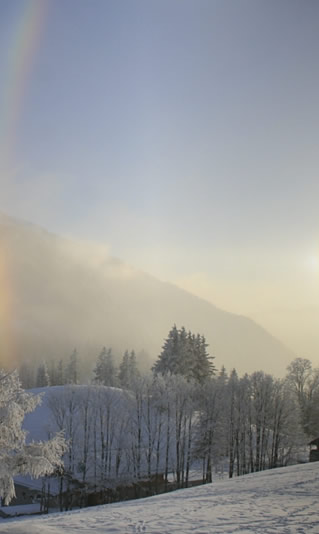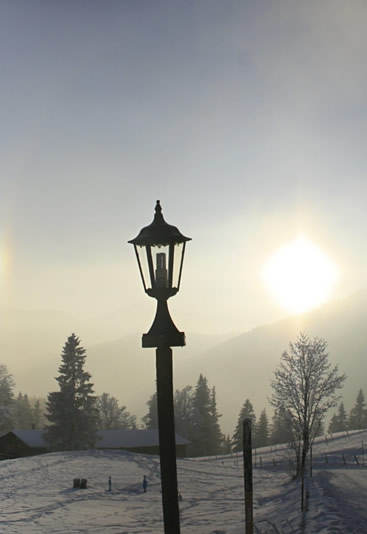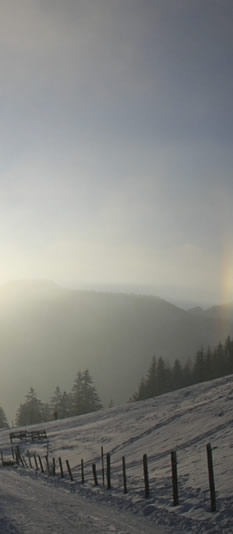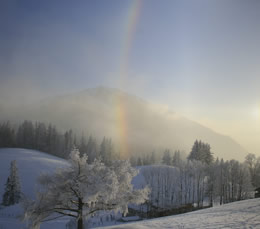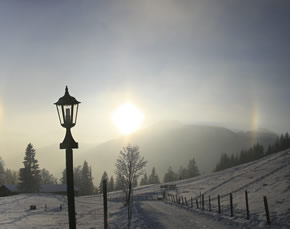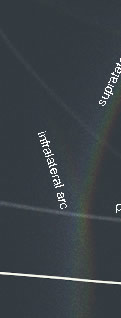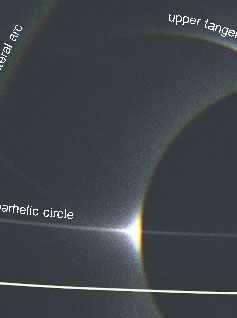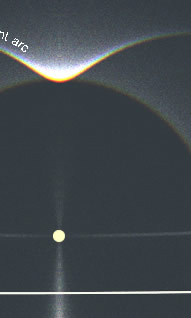The patchy drifting ice crystal cloud somewhat hindered halo identification. In this particular image the inner halos, 22° halo and upper tangent arc are surprisingly weak and diffuse in contrast to the strong outer halo(s). usualyy we have the reverse.
The upper outer halo is a supralateral arc from horizontal column crystals. The sun's rays enter a prism side face and leave through an end face. the faces are inclines at 90° yielding the wide colour separation.
The lower halo, an infralateral arc, rises upwards and curves outwards from the sun. It projects above the parhelic circle extending beyond the supralateral arc.
To form the infralateral arc sunlight enters the end faces of column crystals and leaves via a prism side face - the reverse of a supralateral arc path.
The curving infralateral arc and the cusp shape at the junction with the parhelic circle allows the arcs to be distinguished from the more rare 46° halo which nonetheless could also be faintly present. |
